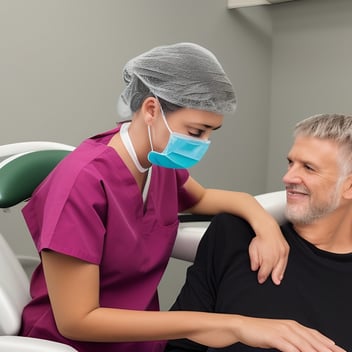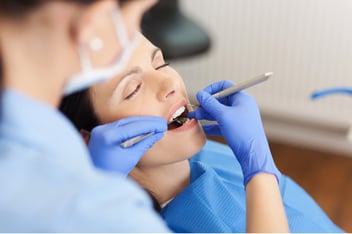Hyperdontia: Causes, Symptoms, and Treatment Options
Are you familiar with the saying, "Too much of a good thing"? Well, that can certainly apply to teeth as well. Hyperdontia, a condition characterized by an excess of teeth, can lead to various oral health challenges. In this blog post, we'll delve into the causes, symptoms, and available treatments for hyperdontia, ensuring you're well-informed about this dental anomaly.
Hyperdontia, also known as supernumerary teeth, can occur due to a combination of genetic and environmental factors. Here are some causes commonly associated with this condition:
-
Genetic Factors: Hyperdontia can be inherited, meaning it runs in families. Genetic mutations or syndromes like Gardner's syndrome and cleidocranial dysplasia are often linked to the development of extra teeth.
-
Environmental Factors: Certain factors during tooth development, such as trauma, infections, hormonal imbalances, or exposure to radiation, may contribute to the formation of supernumerary teeth.
Identifying the symptoms of hyperdontia is crucial for early diagnosis and intervention. Some common signs include:
-
Crowding and Misalignment: Extra teeth can cause overcrowding in the mouth, leading to misalignment and crookedness.
-
Delayed Eruption: Supernumerary teeth may cause delays in the eruption of permanent teeth, affecting the normal sequence of tooth development.
-
Impacted Teeth: Extra teeth can become impacted, meaning they remain trapped beneath the gum line and fail to emerge properly.
-
Dental Issues: Hyperdontia can increase the risk of tooth decay, gum disease, and other oral health problems due to the difficulties in maintaining proper oral hygiene.
When it comes to the treatment of hyperdontia, the approach depends on the severity of the condition and its impact on oral health. Here are some treatment options:
-
Tooth Extraction: If the supernumerary teeth are causing overcrowding or other dental problems, extraction may be necessary. This allows the remaining teeth to align properly and promotes a healthier bite.
-
Orthodontic Treatment: In cases where hyperdontia has caused misalignment, orthodontic treatment, such as braces or aligners, can help reposition the teeth and correct the bite.
-
Dental Restoration: If the extra teeth are functional and aesthetically pleasing, they can be preserved and restored through dental procedures like reshaping, contouring, or veneers.
-
Ongoing Dental Care: Regular dental check-ups and cleanings are essential to monitor the progress of treatment, maintain oral health, and detect any potential issues associated with hyperdontia.
When seeking treatment for hyperdontia, it's crucial to find the right dentist who understands the condition and can provide appropriate care. Consider the following factors when searching for a dentist:
-
Accessibility: Look for a dentist with convenient locations, extended hours, and emergency services, such as a cheap emergency dentist in Leeds or a walk-in dentist near you.
-
Affordability: Seek an affordable or holistic dentist who offers various payment options and accepts insurance or provides affordable dental care for patients without insurance.
-
Family-Friendly Practice: A family dentist who is experienced in treating children can provide comprehensive care for all family members affected by hyperdontia.
-
Expertise: Find a dentist with expertise in orthodontics and dental restoration to address the specific needs associated with hyperdontia effectively.
In conclusion, hyperdontia is a condition that requires proper diagnosis, management, and treatment to maintain oral health and a functional bite. By understanding its causes, recognizing the symptoms, and seeking appropriate dental care, you can address hyperdontia and ensure a healthy and confident smile.
.png?width=80&height=80&name=Clove%20Dental%20White%20Small%20(28).png)



